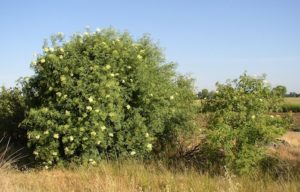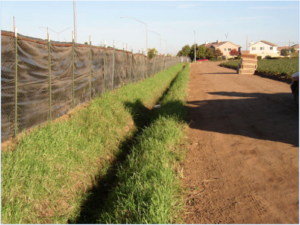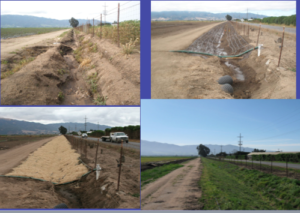
Elderberry – Sambucus mexicana
There are many native plants available as material for conservation plantings.
MASTER PLANT LIST

Coast Live Oak – great habitat for insect-eating birds: An Oak on Every Farm!

Two-year-old Coast Live Oaks planted every 25-feet apart with shrubs between, in sheep pasture

Coast Live Oak, Ceanothus ‘Dark Star”, Black Sage

Ceanothus: Many varieties, short, medium tall; many flowers, great for beneficials
 Ceanothus ‘Ray Hartman’ – very tall
Ceanothus ‘Ray Hartman’ – very tall

Black Sage (Salvia mellifera)

California sage (Artemisia californica) – in the Sunflower family

California sage – Artemisia californica

Sugarbush – Rhus ovata

Quailbush/Saltbush – very rigorous

Quailbush/Saltbush – Atriplex lentiformis

California fuschia

Fuschia in hedgerow

Flannelbush – Fremontodendron californicum

Manzanita – hardy shrub

Coyote brush (Baccharis piularis) – Strong, a survivor; host for many beneficial insects and wasps

Yarrow and Penstemon in hedgerow
GRASSES
 Perennial vs. Annual Grass Roots
Perennial vs. Annual Grass Roots
 Perennial grasses in drainage ditch
Perennial grasses in drainage ditch
 From eroding ditch to grassed waterway
From eroding ditch to grassed waterway






Leaving grasses in drainage as wildlife corridor

Deergrass – likes wet areas

Deergrass – Large native bunchgrass
Hedgerows and grassed waterways are increasingly being planted on farms and can have multiple functions: they can serve as habitat for beneficial insects, pollinators and other wildlife; provide erosion protection and weed control; stabilize waterways; serve as windbreaks; reduce non-point source water pollution and groundwater pollution; increase surface water infiltration; buffer from pesticide drift, noise, odors, and dust; act as living fences and boundary lines; increase biodiversity; and provide an aesthetic resource.
 Ceanothus ‘Ray Hartman’ – very tall
Ceanothus ‘Ray Hartman’ – very tall Perennial vs. Annual Grass Roots
Perennial vs. Annual Grass Roots Perennial grasses in drainage ditch
Perennial grasses in drainage ditch From eroding ditch to grassed waterway
From eroding ditch to grassed waterway Ceanothus ‘Ray Hartman’ – very tall
Ceanothus ‘Ray Hartman’ – very tall Perennial vs. Annual Grass Roots
Perennial vs. Annual Grass Roots Perennial grasses in drainage ditch
Perennial grasses in drainage ditch From eroding ditch to grassed waterway
From eroding ditch to grassed waterway